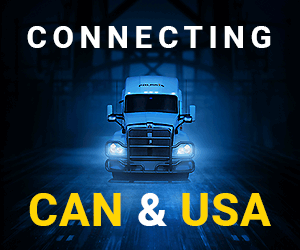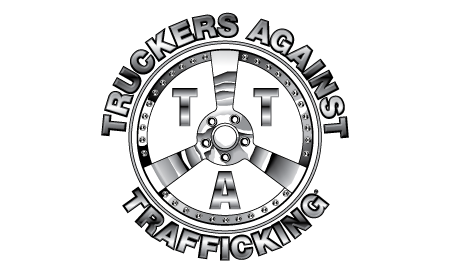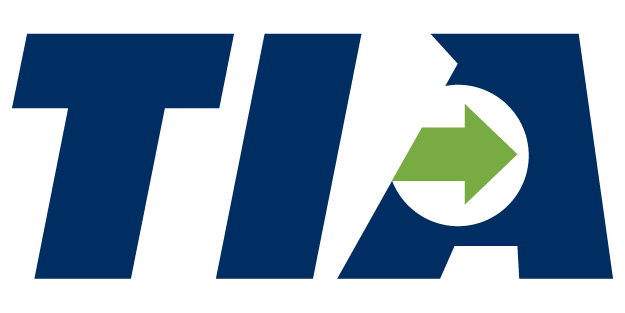TIA Joins Coalition in Opposition to CA Proposed Container Fees
The South Coast Air Quality Management District (SCAQMD) has proposed two container tax proposals this year, one for $35 per TEU which was presented to legislators in Sacramento earlier this year as part of an effort to raise $385 million per year, and a $100 per TEU tax which was recommended by the SCAQMD Legislative Committee, which will reportedly raise $1.1 billion per year.
How the funds will be collected and the intended use of these funds are ill defined and any analysis on how such fees would impact local businesses and California’s ports as trade gateways is nonexistent.
TIA is working in coalition with the National Retail Federation (NRF) and other trade groups to defeat these proposed fees. If you have any questions, please contact TIA Advocacy ([email protected], 703.299.5700).
Major Changes Continue in Ocean Carrier Marketplace
Following the August 31, 2016 filing of bankruptcy by Hanjin Shipping Co., which was formerly the 7th largest ocean carrier, major shifting in steamship alliances are continuing to impact the marketplace. On December 1, 2016, A.P. Moller Maersk announced that it would buy German rival carrier Hamburg Sud and, on Sunday, December 11, 2016, Hyundai Merchant Marine announced that it would enter into a cooperative relationship with the 2M Alliance. All three events, from the bankruptcy to the mergers and acquisitions, are the result of continuing overcapacity among shipping lines that has led to the worst rate down-cycle in decades.
Hamburg Sud operates 250 offices around the globe, and generated revenues of over $6 billion from their fleet of 130 vessels last year. The acquisition will strengthen Maersk’s position as the largest container shipping line in the world, and the Journal of Commerce reports that the combination will improve Maersk service along north-south global trade routes. The addition of Hamburg Sud’s 3.8 million TEU capacity will give Maersk approximately 18.6% of the global market share and widen the gap between Maersk and second-ranked Mediterranean Shipping Co. (MSC), which has a 13.6% market share. Maersk and MSC cooperate through the 2M Alliance, the largest of the four major ocean carrier alliances which is particularly dominant on Transatlantic and Europe-Asia shipping routes.
The December 11, 2016 announcement by Hyundai Merchant Marine (HMM) that it has entered into a vessel-sharing agreement with the 2M Alliance will further bolster the capacity of that alliance. A three-year agreement, which will begin in 2017 following regulatory approval, will allow HMM to purchase or share cargo slots on Maersk and MSC ships. This is a common arrangement among ocean carrier alliance partners throughout the industry and helps the carriers to fill capacity at a time of historic overcapacity and low rates. Additionally, Maersk and MSC will take over the charters and operations of several ships currently chartered by HMM. The overall agreement was critical to HMM creditors and shareholders who saw firsthand the impacts of the bankruptcy proceedings of rival Korean shipping line Hanjin Shipping Co.
TIA’s International Logistics Conference monitors major news relating to ocean freight and international trade. For more information on this issue, or to get involved with the committee, please contact Will Sehestedt at [email protected].
FMCSA Lifts Restrictions on Leasing and Interchange of Mexico-Domiciled Motor Carriers
November 23, 2016 – Mexico-domiciled motor carriers may now apply for and receive long-haul operating authority, as the land transportation provisions of NAFTA for property carriers have now been implemented. Therefore, the previous leasing restrictions are no longer valid and the restrictions have been lifted.
The Motor Carrier Safety Improvement Act of 1999 (MCSIA) contained a section, 219(d), that restricted Mexico-domiciled motor carriers from leasing commercial motor vehicles to U.S. carriers to transport property into the United States until the international obligations on cross-border trade in service under the North American Free Trade Agreement (NAFTA) were met. Given FMCSA’s acceptance of applications for long-haul operating authority from Mexico-domiciled motor carriers following the conclusion of the U.S.-Mexico Cross Border Long-Haul Trucking Pilot Program, the obligations are fulfilled and the restriction is no longer applicable.
From October 14, 2011, through October 10, 2014, FMCSA conducted a pilot program to determine the ability of Mexican motor carriers to operate safely in the United States. FMCSA delivered the requisite report to Congress in January 2015. On January 15, 2015, (80 FR 2179) FMCSA announced that it would begin accepting and processing applications for long-haul operating authority from Mexico-domiciled property carriers under 49 U.S.C. 13902.
For more information, contact TIA Advocacy ([email protected], 703.299.5700).
Hanjin Bankruptcy Update: Filing Claims and Recovering Containers
October 19, 2016 – Bankruptcy proceedings for Hanjin, formerly the world’s seventh biggest shipping line, are moving forward quickly. Last week Andrew Kehagarias, a partner at TIA member law firm Roberts & Kehagarias, informed a group of customs brokers, freight forwarders, NVOCCs, and insurers that any intermediaries with claims should move quickly to file a claim in the case in South Korean court. While bankruptcy protections have been extended in the United States, those protections are covered under a unique part of U.S. bankruptcy law, Chapter 15. Chapter 15 bankruptcies are the United States application of an international treaty that improved legal coordination for international bankruptcy proceedings. Under Chapter 15 bankruptcy law, because the case was first filed in South Korea, the U.S. case and protections are secondary to those primary South Korean proceedings. In order to ensure that any claims under these proceedings are considered, forwarders with claims are recommended to secure legal counsel and act quickly to submit those claims.
TIA was recently notified by the Institute of International Container Lessors (IICL) that the companies who own ocean shipping containers, and had leased them to Hanjin prior to the bankruptcy, are attempting to recover their equipment. To view the IICL notice, please click here. TIA members are asked to please contact the relevant owner of a Hanjin container if they come across any equipment with the prefixes listed in the notice.
As there are further updates to issues rising from the Hanjin bankruptcy, TIA will reach out to its members who are most affected. For more information on this issue, or to get involved in TIA’s International Logistics Conference, please contact Will Sehestedt at [email protected].
Ports, Courts, and Customers Work Through Hanjin Bankruptcy Complications
September 21, 2016 – Cargo owners, non-vessel-operating common carriers, vendors, and port and terminal operators are all struggling through the complications of cargo stranded by Hanjin Shipping’s bankruptcy. When Hanjin filed for bankruptcy in South Korean court on August 31, 2016, over 80 vessels either owned or chartered by the company were left without the necessary funding to dock and unload cargo at ports around the world. Since that date, Hanjin Shipping has pursued the protections of bankruptcy courts in other countries, including the United States, and entities doing business with Hanjin have worked to recover their cargo and receive payment for their services.
Hanjin Shipping filed for chapter 15 bankruptcy protection in the U.S. on Friday, September 2, 2016. The company also secured a provisions protective order from U.S. Bankruptcy Judge John Sherwood to prevent the company’s creditors from seizing ships or property, and to allow cargo owners to make arrangements to retrieve their freight. Additional instructions from the court will allow Hanjin to spend money to dock at U.S. ports, and to unload vessels that have been stranded on the ocean following the initial bankruptcy filing.
As the Hanjin ships unload their containers, U.S. ports have collected money up front from a Hanjin emergency fund, and levied significant fees on cargo owners to recover that freight. The Ports of Los Angeles and Long Beach in California have unloaded several Hanjin ships. The Port of Houston initially suspended the movement of nearly 400 Hanjin containers, after payments from the shipping line were interrupted, then charged $100 per container to pick up a Hanjin container, before allowing cargo owners to pick up imports they had already paid for without payment of demurrage or additional fees. Other U.S. ports have charged exporters to dray out loaded Hanjin containers, re-load goods and re-book them on another carrier, and pay demurrage fees while the containers sat outside the terminal.
As a result of these fees and concerns, a group of NVOCCs including Carolina Ocean Lines, Kuehne + Nagel, Domek Logistics, Apex Maritime, MIQ Global Logistics, Mitsubishi Logistics America, Dynamic Worldwide Logistics, and WorldBridge Logistics have filed a request with the Judge Sherwood in U.S. Bankruptcy Court to extend his protective order to include those companies trying to recover their freight. Clarification and extension of the protective order would, ideally, allow NVOCCs and other shippers to reclaim cargo while paying only the fees as contracted by Hanjin with third parties. Such an order would ensure that those third parties are not able to inflate costs for shippers and cargo owners who have been left in a lurch by the Hanjin bankruptcy.
TIA’s International Logistics Conference is following the Hanjin bankruptcy issue closely, and is the point of discussion between TIA members who move freight internationally. For additional information, please contact Will Sehestedt at [email protected].
Hanjin Shipping Bankruptcy Update
September 14, 2016 – On August 31, 2016, Hanjin Shipping, one of the world’s ten largest container shipping companies, filed to enter receivership in South Korea. This change followed months of negotiations and attempts to restructure the company’s debt and has quickly had a major impact on trans-Pacific shipping prices and capacity during a critical time of the year. Hanjin quickly filed for Chapter 15 bankruptcy protection in the United States, at the U.S. Bankruptcy Court in Newark, N.J on Friday, September 2, 2016. The Wall Street Journal reports that the company will eventually file for court protection in as many as 43 jurisdictions in order to ensure that creditors cannot seize its ships and other assets.
Hanjin Shipping’s financial difficulties create major dilemmas for shippers and forwarders who must find a way to recover their cargo, and book passage for new freight on other ocean carriers. Initial industry estimates were that approximately 500,000 containers holding $14 billion in cargo were initially stranded on Hanjin vessels following the bankruptcy filing. Overall, Hanjin accounted for around 7 percent of Asia-U.S. cargo trade and operated a daily capacity of 25,000 shipping containers. While the spot prices for trans-Pacific freight initially jumped in the week after the bankruptcy filing in South Korea, those prices have stabilized as other ocean carriers in those lanes were able to absorb that freight on their vessels without significant operational changes.
The Journal of Commerce reports that Hanjin ships that have been waiting off the Coast of the U.S. may be able to dock and unload their cargo under protection from the U.S. bankruptcy court. However, once unloaded, it will still be costly for the beneficial cargo owners to reclaim the imported containers. On the U.S. West Coast, the Port of Los Angeles and the Port of Long Beach are holding onto imported Hanjin containers until they are paid up front for charges related to container unloading and handling. On the U.S. East Coast, the Port of New York and New Jersey, Maher Terminal (which is the terminal at that port that receives Hanjin ships) had not yet announced the cost to shippers and cargo owners for recovering imported Hanjin containers, the Port of Virginia announced that the charge to release import containers will be $325, and the South Carolina Ports Authority announced that it will collect charges totaling $350 per container.
In the U.S., the Federal Maritime Commission (FMC) and Customs and Border Protection (CBP) have issued guidance on the handling of cargo from Hanjin vessels. As there are updates to cargo handling guidelines from the agencies, or legal developments in the bankruptcy case, TIA will reach out to its members who are most affected. For more information on this issue, or to get involved in TIA’s International Logistics Conference, please contact Will Sehestedt at [email protected].
Hanjin Shipping Co. Files for Bankruptcy Protection
September 7, 2016 – The Hanjin Shipping Company filed for bankruptcy protection in Seoul, South Korea on Wednesday, August 31, 2016. Hanjin, which is the ninth-largest shipping line in the world, struggled with slumping global trade volumes and overcapacity, and was forced into receivership when the company’s creditor cut off a lifeline of $896 million in loans. The company had previously been under a creditor-led program to restructure and refinance approximately 500 billion won ($446 million) in debt by selling assets and securing financial aid from other units under its corporate umbrella (Hanjin is a unit of the conglomerate that controls Korea Air Lines Company).
Hanjin employs 4,800 people worldwide, and had debt of 6.6 trillion won ($5.9 billion) and a debt-to-equity ratio of almost 850% at the end of 2015. Its creditors estimated that it would need at least one trillion won ($896 million) in capital to repay maturing debt, pay shipowners, and avoid receivership. As the shipping giant moves into receivership, freight brokers, forwarders, and shippers have scrambled to move their freight onto other ocean carriers. The resulting capacity crunch has led other ocean carriers to levy surcharges on their rates. Overall, Hanjin accounted for around 7% of Asia-U.S. cargo trade and operated a daily capacity of 25,000 shipping containers.
Currently, creditors are seeking to enforce maritime liens in order to establish a preference over other creditors. Many marine terminal operators (“MTOs”) and railroads are refusing to deliver Hanjin containers. Whether those MTOs and railroads will assess demurrage is unclear at this point. The Federal Maritime Commission (FMC) has issued guidance to the shipping public, which is available at http://www.fmc.gov/NR16-18/.
TIA’s International Logistics Conference will monitor this issue and provide updates to membership. For more information, please contact Will Sehestedt at (703)299-5700 or [email protected].
China Issues Zika Notices for U.S. Container Cargo
August 17, 2016 – As reported by American Shipper and the Journal of Commerce, Chinese authorities have given notice that containers from countries impacted by the Zika virus will need to be subjected to anti-mosquito treatment or fumigation. As of August 3, 2016, this regulation includes containers originating from the United States. This change leaves exporters scrambling to determine what methods constitute acceptable anti-mosquito treatment and certification, what methods are safe for food-grade products, and how the costs of this regulation will be absorbed by the supply chain.
Ocean carriers including Mediterranean Shipping Company (MSC) and APL have issued customer advisories in recent months on this issue. The authorities at the China Entry-Exit Inspection and Quarantine Bureau (CIQ) require vessels and containers from Latin American, South American, and Caribbean countries (and now the United States) to present mosquito eradication certificates to CIQ that indicate the vessels and containers were treated prior to departure. If no certificate is provided, then the vessels and containers must be treated under supervision of the CIQ prior to their release. U.S. exports were added to the list by Chinese regulators following the identification of 21 cases of Zika virus in the state of Florida.
TIA’s International Logistics Conference monitors this issue, as well as other news that impacts the flow of goods through U.S. ports. For more information, please contact Will Sehestedt at [email protected].













